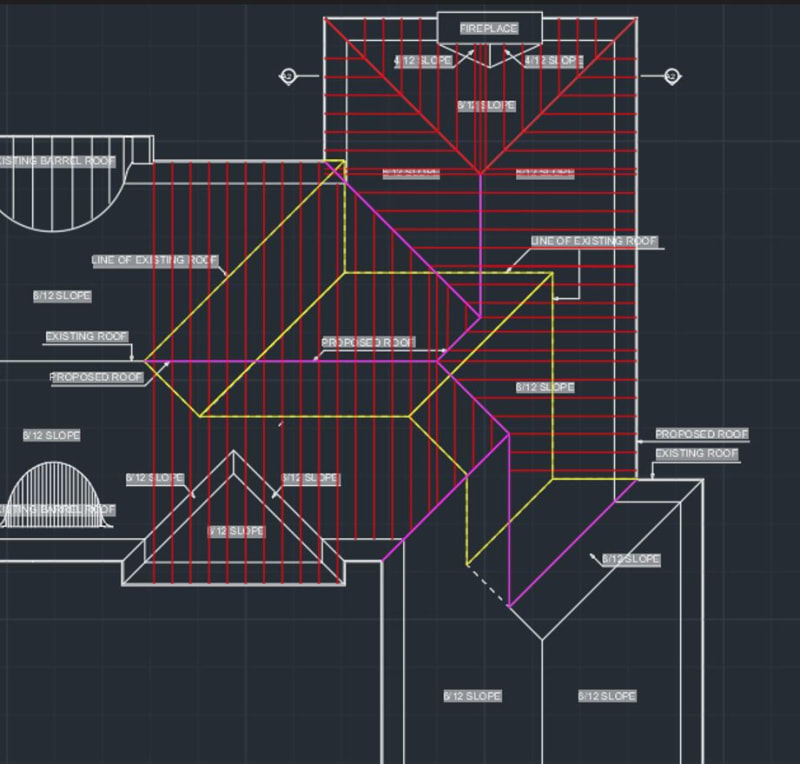Said the Sky
Structural
hello,
I have an existing house that the owner wants to extend (it is the area with the red rafters). Another thing is due to truss manufacterers sipply chain issues the owner doesn't want to wait for months out for trusses. So he requested to do "A" framing using rafters and ceiling joist as ties. I have no problems doing a regular home with the hip-roof framing however this one is oddly shaped and am inclined to add posts to support the area where the ridge/valley rafters meet, but not sure if I am being overly conservatives. I do know that if there is equilibrium in thrust force in each direction at the ridge and also at the base of the truss where it meets top of the walls, then theoretically we do not need a post at the ridge.
let me know how you guys would frame this,
thanks!
I have an existing house that the owner wants to extend (it is the area with the red rafters). Another thing is due to truss manufacterers sipply chain issues the owner doesn't want to wait for months out for trusses. So he requested to do "A" framing using rafters and ceiling joist as ties. I have no problems doing a regular home with the hip-roof framing however this one is oddly shaped and am inclined to add posts to support the area where the ridge/valley rafters meet, but not sure if I am being overly conservatives. I do know that if there is equilibrium in thrust force in each direction at the ridge and also at the base of the truss where it meets top of the walls, then theoretically we do not need a post at the ridge.
let me know how you guys would frame this,
thanks!

